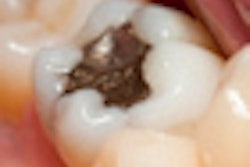
A United Nations (UN) committee meeting in Stockholm June 7-11 will begin drawing up a legally binding international treaty on mercury reduction that could restrict dental amalgam. The proceedings may include clashes between amalgam foes and dentists' groups.
In a preliminary cost-benefit analysis, the staff for the Intergovernmental Negotiating Committee of the United Nations Environment Programme (UNEP) estimated that some strategies for reducing amalgam use -- such as installing separators and switching to composite resins -- might be too expensive.
In addition to approaches to mercury reduction, the participants will consider ways of enforcing such a treaty, including imposing trade restrictions on violators. The committee has set a goal of completing the treaty by 2013.
“We can give dental consumers, amalgam victims, and parents a strong voice fighting for an end to amalgam on the world stage.”
— Sandra Duffy, Consumers for
Dental Choice
"UNEP has, for some seven years, coordinated and contributed to an intense scientific and policy debate on how best to deal with the issue of mercury," said Achim Steiner, UNEP executive director, in a press release. "Today the world's environment ministers, armed with the full facts and full choices, decided the time for talking was over -- the time for action on this pollution is now."
The meeting may also feature a showdown between antiamalgam activists and dentists' groups. "The United Nations has just granted nongovernment organization (NGO) status to Consumers for Dental Choice, which means that we can participate in the negotiations -- and give dental consumers, amalgam victims, and parents a strong voice fighting for an end to amalgam on the world stage," said Sandra Duffy, board president of Consumers for Dental Choice, in a press release.
Representatives of the FDI World Dental Federation, a worldwide coalition of national dentists' organizations, are expected to argue against international restrictions on amalgam. "Other currently available dental filling materials may not represent economically viable, affordable alternatives in many circumstances, most particularly in developing countries where the use of alternatives may present additional clinical, logistical, economic, and infrastructure challenges," the federation stated in a resolution last year.
In a separate statement, the FDI said that "chairside traps, vacuum pump filters and/or amalgam separators capture most of the amalgam waste particles." The organization called on dental staff to "adopt best management practices for ensuring that all generated waste is properly disposed of."
Options considered
Background documents supplied by the UNEP committee list the global demand for dental mercury as 270 metric tons -- about 7% of the total of 3,439 metric tons. Dentistry is the fourth biggest usage of the substance, after small-scale gold mining (1,000 metric tons), chlor-alkali (619 metric tons), and batteries (400 metric tons).
The U.S. accounts for 51 of the 270 metric ton global demand in dentistry, while Europe accounts for 70 metric tons, it said.
A UNEP cost-benefit report cites a prediction that global demand for dental mercury will decline to 250 metric tons by the year 2020 because of improvements in oral health. Of the 270 metric tons now in use, about 200 make it into the waste stream. Only about 15% of these 200 metric tons is recycled or recovered, according to the report. By comparison, the European Union recovers or recycles about 25% of what it uses, it stated.
The benefits of capturing amalgam with separators are not worth the cost, according to the report. In trying to estimate the benefits of reducing amalgam use, the researchers looked at what society would save by preventing health problems associated with eating fish tainted by mercury that might enter the environment through dental amalgam. Eating mercury-tainted fish costs society about $12,500 per kg of mercury, the report stated.
The cost of preventing that contamination depends on the method used, according to the report. Citing an independent researcher, the authors found that the lowest cost, $240 per kg, was achieved in Minnesota with increased recycling of chairside traps. Removing amalgam fillings from corpses cost about $400 per kg in Sweden.
Much more expensive was installing amalgam separators, which ranged from $33,000 per kg to $130,000 per kg in Minnesota. Replacing dental amalgam with other types of restorative material was estimated to cost $129,000 per kg. That's because composite resins take more time to place, so dentists charge consumers about $30 more per filling, the report said.
The report cites a different estimate, from the U.S. Environmental Protection Agency, that installing separators throughout the country would cost between $90,625 per kg and $281,250 per kg of mercury reduction.
But the health effects of eating fish might not be the only cost to society; if other pollution costs are factored in, the benefits might be higher, the report concluded.
Copyright © 2010 DrBicuspid.com



















